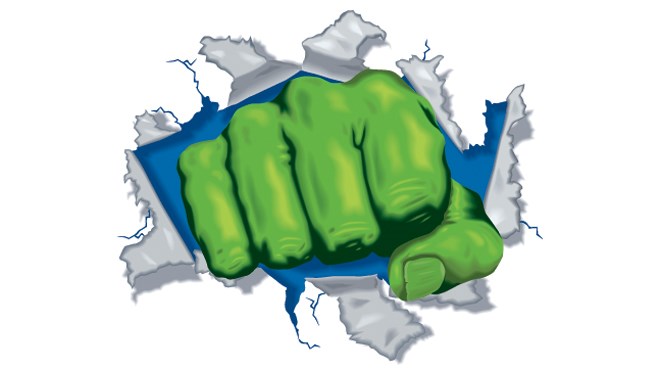The two teams slowly form up – six facing six. Someone on Captain America’s side pipes up, “What do we do now?”
He keeps his gazed locked on Iron Man as he says, “We fight.” This is a snippet of a scene from Captain America: Civil War. The greatest heroes in the world are faced with an ideological issue, and instead of talking about it like we are taught to do, they immediately bare their fists.
I’ve been a fan of superheroes and the comics they star in for years, but as society has repeatedly told us, violence is not the solution to every problem.
So why do superheroes always feel the need to use brawn over brains?
Well, let’s start at the beginning. Most heroes receive their powers in freak accidents or thanks to radioactive materials that are strangely easy to get your hands on. The majority of them start out as normal folks until their DNA gets reconfigured and they are gifted with abilities such as flight, super strength and control over the elements.
Comic creators always make sure that their protagonists have more power than the average person walking on the street, but still have their weaknesses.
The majority of these characters were created between the 1930s and 1970s, which is to say in a radically different world – especially politically speaking. Nowadays, we are told issues are meant to be settled through verbal discourse, not aggression. So why — when superheroes are role models to so many young children — do these larger-than-life figures still walk into situations fist first?
A big part of it is likely the fact that the majority of the villains in comics tend to resort to physical violence before all else. The Joker may play mind games with Batman, but he does it by laying the lives of millions of people on the line first. Overwhelming odds such as these often demand drastic actions, but hand-to-hand combat never seems to be the last resort.
In the 1960s when Spider-Man was just starting out, swinging over the rooftops of Manhattan and stopping thugs in the head of night, he would drop down from the skies, swiftly placing his foot right on a criminal’s jaw. And this was reflected in every panel. Colorful onomatopoeia such as “bonk,” “crash,” and “blam,” means even the violence was painted as something joyous and fun.
While this glorification of violence has been left behind in more recent iterations of superheroes, it’s still puzzling why superheroes such as Iron Man and Batman — who are said to be geniuses — still think that firing missiles out of their wrists and punching thugs while dressed as a bat are the best options.
For example, the Marvel comics are currently entering into their second “civil war” event.
The first revolved around whether or not heroes should be controlled by the government, while the second focuses on the issue of whether or not criminals should be tried for crimes before they commit them (this one involves seeing into the future).
Both scenarios are heavily political, but violence is still the end result. Maybe this is a clever comment on how closely tied violent acts and politics are, but more likely than not it’s just that Marvel knows that people just want to see their heroes beat the living daylights out of one another.
The heroes waste no time in turning against each other and ensuring violence will ensue. Why not try and talk it out? Even if events escalate very quickly, they don’t even stop and think about peaceful discourse.
Now, I get it. Having a group of god-like figures sit around a table and talk out their issues isn’t exactly the most gripping action for a comic or movie, but they still need to think about how their stories will be interpreted by their younger readers.
Some young children see these sorts of actions and assume violence should be a first and last resort, especially when we put superheroes on every billboard their square jaws will fit on when their movies come out. Superheroes are looked up to as role models; their actions not only ignite the imaginations of young children, but also how they view the world.
Earlier this year, I was reading the superhero comic “Invincible.” At one point in the story, Invincible clashes with a villain who is looking to change the world, but can only do so by killing millions of people.
Invincible saw the good in the dark heart of his enemy and worked with him to change the world without putting people in harm’s way. It was a novel way for a hero to interact with a villain, but Marvel or DC didn’t do it. If real change is to happen, one of these big two companies needs to helm the effort.
It might be more exciting for fistfights to break out in the middle of battle-torn streets rather than debates in well-furnished conference rooms, but it still comes off as strange sometimes.
Yes, the villains in comics often require an aggressive show of force to bring them to their knees, but it only serves to further perpetuate the violence that superheroes are so well known for.
Matthew Herst is a Carleton University communications student, video game journalist and Sudbury.com’s resident geek writer. Yeah, this guy love’s video games. Besides Sudbury.com, you can also find his work on TheNerdStash.com. Follow him on Twitter @supergurst.
